Investigating the Geothermal Potentiality of Hail Granites, Northern KSA: The Preliminary Results
Abstract
1. Introduction
2. Geological Setting
Radioactivity and Geothermal Signatures
3. Available Data and Methodology
4. Data Analysis and Results
4.1. Lithological Characteristics of the Hail Granite
4.2. Water Type and Geothermometric Analysis
4.3. Radiogenic Heat Production
5. Discussion
5.1. Subsurface Thermal Regimes at Hail Area
5.2. EGS Geothermal Reserves
5.3. Scenarios for Energy Production and Limitations
5.3.1. Injection and Production Wells
5.3.2. Circulating Fluids
5.3.3. Constraints and Future Work
6. Conclusions
- -
- The Hail granite forms part of the Arabian Shield and is exposed in the south-central part of the Hail area.
- -
- It primarily consists of alkaline and peralkaline pink granite enriched in radioactive minerals, resulting in high radiogenic heat production.
- -
- The geothermometric analysis relied mainly on the Quartz and Na-K geothermometers. Based on geothermometers and logging analyses, the subsurface temperature in the Hail area is estimated to range from 85 °C to 90 °C at an approximate depth of 2000 m (upscaled to 200 °C @ 5 km) and heat flow up to 99.87 mW/M2.
- -
- The ternary and Giggenbach plots indicated Na-Cl dominated water type, with water samples located in the immature area, indicating immature water with limited or weak interaction with the deep-seated rocks EGS granitic rocks.
- -
- The natural gamma ray spectrometry showed elevated contents of Th and U up to 149.66 and 47.43 ppm, correlated with a high RHP record of 20 μW/m3.
- -
- With an estimated volume of 70,108 km3, Hail granites have the potential to generate approximately 2.63 × 1016 MWe assuming a 2% heat recovery. Considering the Saudi average annual electric energy consumption per capita of 9200 kWh, the possible average contribution of the Hail granite will be 2.86 × 1012 kWh per capita annually.
- -
- Scenarios of energy production using two injection and production wells, with water and CO2 as energy-transferring fluids, are demonstrated.
- -
- Some technical limitations/constraints should be treated before upscaling the results of this study in the Hail area. Furthermore, considering the environmental and health hazards of the radiogenic granite and its impact on the groundwater resources in the Hail area are among the important parameters.
- -
- The results of this study highlighted the role of the EGS in the Hail area as a new renewable and sustainable resource that could contribute to the future of the energy mix of KSA.
- -
- A recommendation is to extend the geophysical field investigation and thermo-mechanical laboratory work to better image the subsurface setting of the Hail granite and understand its geo-mechanical behavior under different conditions of pressure and temperature.
Author Contributions
Funding
Institutional Review Board Statement
Informed Consent Statement
Data Availability Statement
Acknowledgments
Conflicts of Interest
References
- Saudi Green Initiative (SGI). Targets-Reduce-Carbon-Emissions. 2024. Available online: https://www.sgi.gov.sa/about-sgi/sgi-targets/reduce-carbon-emissions/ (accessed on 15 December 2024).
- U.S. Energy Information Administration. Saudi Arabia (USEIA). Energy Efficiency and Renewable Energy—How an Enhanced Geothermal System Works. In Middle East Green Initiatives US Department of Energy; Public Report; Washington, DC, USA, 2023. [Google Scholar]
- Middle East Economic Survey (MEES). Saudi oil burn drops as renewables progress. Wkly. Energy Econ. Geopolit. Outlook 2024, 67, 21. [Google Scholar]
- Hussein, M.; Lashin, A.; Al Bassam, A.; Al Arifi, N.; Al Zahrani, I. Geothermal power potential at the western coastal part of Saudi Arabia. Renew. Sustain. Energy Rev. 2013, 26, 668–684. [Google Scholar] [CrossRef]
- Chandrasekharam, D.; Lashin, A.; Al Arifi, N.; Al Bassam, A. Climate Change Mitigation Strategy through Utilization of Geothermal Energy Resources from Western Arabian Shield, Saudi Arabia. J. Clim. Change 2015, 1, 129–134. [Google Scholar] [CrossRef]
- Chandreasekharam, D.; Lashin, A.; Al Arifi, N.; Singh, H.S. Meeting future energy demand of Saudi Arabia through high heat generating granites. Int. J. Earth Sci. Eng. 2014, 7, 1–4. [Google Scholar]
- Chandrasekharam, D.; Lashin, A.; Al Arifi, N.; Varun, C.; Al Bassam, A. High heat generating granites of Western Saudi Arabian Shield. In Proceedings of the World Geothermal Congress, Melbourne, Australia, 19–25 April 2015. [Google Scholar]
- Chandrasekharam, D.; Lashin, A.; Al Arifi, N.; Al Bassam, A.; El Alfy, M. The potential of high heat generating granites as EGS source to generate power and reduce CO2 emissions, western Arabian shield, Saudi Arabia. J. Afr. Earth Sci. 2015, 112, 213–233. [Google Scholar] [CrossRef]
- Lashin, A.; Chandrasekharam, D.; Al Arifi, N.; Al Bassam, A.; Varun, A. Geothermal energy resources of wadi Al-Lith, Saudi Arabia. J. Afr. Earth Sci. 2014, 97, 357–367. [Google Scholar] [CrossRef]
- Lashin, A.; Pipan, M.; Al Arifi, N.; Al Bassam, A.; Mocni, A.; Forte, A. Geophysical exploration of the western Saudi Arabian geothermal province: First results from the Al-Lith area. In Proceedings of the World Geothermal Congress, Melbourne, Australia, 19–25 April 2015; pp. 1–9. [Google Scholar]
- Lashin, A.; Al Arifi, N.; Chandrasekharam, D.; Al Bassam, A.; Rehman, S.; Pipan, M. Geothermal Energy Resources of Saudi Arabia: Country Update. In Proceedings of the World Geothermal Congress, Melbourne, Australia, 19–25 April 2015; pp. 1–15. [Google Scholar]
- Lashin, A.; Aboud, E.; El Khreby, S.; Al Bassam, A.; Al Arifi, N.; Al Faifi, H. The Geothermal Potentiality of the Saudi Arabian Volcanic Eruptions ‘Harrats’: An Overview. In Proceedings of the World Geothermal Congress, Reykjavík, Iceland, 26 April–1 May 2020. [Google Scholar]
- Lashin, A.; Chandrasekharam, D.; Al Bassam, A.; Al Arifi, N.; Rehman, S. A review of the Geothermal Resources of Saudi Arabia: 2015–2020. In Proceedings of the World Geothermal Congress, Reykjavík, Iceland, 26 April–1 May 2020. [Google Scholar]
- Zaidi, F.K.; Lashin, A.; Aboud, E.; Al Arifi, N.; Al-Bassam, A.; Al-Homadhi, E.; Abu Anbar, M. Silica geothermometry and multi indices approach to characterize groundwater from Midyan region in Northwestern Saudi Arabia. J. Afr. Earth Sci. 2022, 192, 104557. [Google Scholar] [CrossRef]
- Aboud, E.; Qaddah, A.; Harbi, H.; Alqahtani, F. Geothermal resources database in Saudi Arabia (GRDiSA): GIS model and geothermal favorability map. Arab. J. Geosci. 2021, 14, 112. [Google Scholar] [CrossRef]
- Aboud, E.; Lashin, A.; Zaidi, F.K.; Al Arifi, N.; Al-Bassam, A.; Al-Homadhi, E.; Abu Anbar, M. Audio Magnetotelluric and Gravity Investigation of the High-Heat-Generating Granites of Midyan Terrane, Northwest Saudi Arabia. Appl. Sci. 2023, 13, 3429. [Google Scholar] [CrossRef]
- Bischoff, A.; Bankher, K.A.; Alashi, E.A.; Arola, T.; Brinji, H.S.; Németh, K.; Martinkauppi, A.; Jabrte, A.H.; Kortunov, E.; Alzahrani, I.S.; et al. Geothermal resources in the northern Harrat Rahat volcanic field, Saudi Arabia: A drilling and field data assessment. Geothermics 2025, 128, 103272. [Google Scholar] [CrossRef]
- Boulos, F. Some aspects of the geophysical regime of Egypt in relation to heat flow, ground water and microearthquakes. In The Geology of Egypt; Said, R., Ed.; Chapter, 6; Routledge: London, UK, 1990; pp. 61–89. [Google Scholar]
- Lashin, A. A preliminary study on the potential of the geothermal resources around the Gulf of Suez, Egypt. Arab. J. Geosci. 2013, 6, 2807–2828. [Google Scholar] [CrossRef]
- Aboulela, H.; Amin, A.; Lashin, A.; El Rayes, A. Contribution of geothermal resources to the future of renewable energy in Egypt: A case study, Gulf of Suez-Egypt. Renew. Energy 2021, 167, 248–265. [Google Scholar] [CrossRef]
- Lashin, A.; Abu Anbar, M.; Aboud, E.; Zaidi, F.K.; Al Arifi, N.; Al-Bassam, A.; Al-Homadhi, E. Geochemistry and Petrogenesis of the Ediacaran Post-Collisional Granitoid Rocks in the Midyan Terrain, Northern Arabian Shield, Saudi Arabia. Minerals 2023, 13, 379. [Google Scholar] [CrossRef]
- Brown, D.W. A hot dry rock geothermal energy concept utilizing supercritical CO2 instead of water. In Proceedings of the 25th Workshop on Geothermal Reservoir Engineering Stanford University, Stanford, CA, USA, 24–26 January 2000. [Google Scholar]
- Pruess, K. Enhanced geothermal systems (EGS) using CO2 as working fluid—A novel approach for generating renewable energy with simultaneous sequestration of carbon. Geothermics 2006, 35, 351–367. [Google Scholar] [CrossRef]
- Randolph, J.B.; Saar, M.O. Coupling geothermal energy capture with carbon dioxide sequestration in naturally permeable, porous geologic formations: A comparison with enhanced geothermal systems. GRC Trans. 2010, 34, 2206–2213. [Google Scholar]
- Gerard, A.; Genter, A.; Kohl, T.; Lutz, P.; Rose, P.; Rummel, F. The deep EGS (Enhanced Geothermal System) project at Soultz-sous-Forets (Alsace, France). Geothermics 2006, 35, 473–483. [Google Scholar] [CrossRef]
- The Australian Renewable Energy Agency (ARENA), 2020. Cooper Basin Enhanced Geothermal Systems. Website Source. 2020. Available online: https://arena.gov.au/projects/cooper-basin-enhanced-geothermal-systems-heat-and-power-development/ (accessed on 15 December 2024).
- Duchane, D.; Brown, D. Hot Dry Rock (HDR) Geothermal Energy Research and Development at Fenton Hill; GHC Bulletin: New Mexico, USA, 2002; pp. 13–19. [Google Scholar]
- Hackstein, F.V.; Madlener, R. Sustainable operation of geothermal power plants: Why economics matters. Geotherm Energy 2021, 9, 10. [Google Scholar] [CrossRef]
- Massachusetts Institute of Technology (MIT). The Future of Geothermal Energy—Impact of Enhanced Geothermal Systems (EGS) on the United States in the 21st Century; MIT—Massachusetts Institute of Technology: Cambridge, MA, USA, 2006; 358p. [Google Scholar]
- Kumari, W.G.P.; Ranjith, P.G.; Perera, M.S.A.; Shao, S.; Chen, B.K.; Lashin, A.; Al Arifi, N.; Rathnaweera, T.D. Mechanical behaviour of Australian Strathbogie granite under in-situ stress and temperature conditions: An application to geothermal energy extraction. Geothermics 2017, 65, 44–59. [Google Scholar] [CrossRef]
- Gładysz, P.; Sowiżdżał, A.; Miecznik, M.; Pająk, L. Carbon dioxide-enhanced geothermal systems for heat and electricity production: Energy and economic analyses for central Poland. Energy Convers. Manag. 2020, 220, 113142. [Google Scholar] [CrossRef]
- Zhong, C.; Xu, T.; Yuan, Y.; Feng, B.; Yu, H. The feasibility of clean power generation from a novel dual-vertical-well enhanced geothermal system (EGS): A case study in the Gonghe Basin, China. J. Clean. Prod. 2022, 344, 131109. [Google Scholar] [CrossRef]
- Concentric Energy Advisors (CEA). First Enhanced Geothermal System in the U.S. Showcases an Ancient Technology with Modern Potential, but Obstacles Persist. Website Source. January 2024. Available online: https://ceadvisors.com/first-enhanced-geothermal-system-in-the-u-s-showcases-an-ancient-technology-with-modern-potential-but-obstacles-persist/ (accessed on 25 January 2025).
- Chandrasekharam, D.; Chandrasekhar, V. Hot dry rock potential in India: Future road map to make India energy independent. In Proceedings of the World Geothermal Congress, Bali, Indonesia, 25–29 April 2010. [Google Scholar]
- Reinsch, T.; Dobson, P.; Asanuma, H.; Huenges, E.; Poletto, F.; Sanjuan, B. Utilizing supercritical geothermal systems: A review of past ventures and ongoing research activities. J. Geotherm. Energy 2017, 5, 16. [Google Scholar] [CrossRef]
- Ikeuchi, K.; Doi, N.; Sakagawa, Y.; Kamenosono, H.; Uchida, T. High-temperature measurements in well WD-1a and the thermal structure of the Kakkonda geothermal system, Japan. Geothermics 1998, 27, 591–607. [Google Scholar] [CrossRef]
- Asanuma, H. Status of Japanese Supercritical Geothermal Project in 2022; GRC Transactions: Reno, NV, USA, 2022. [Google Scholar]
- Coleman, R.G.; Gregory, R.T.; Brown, G.F. Cenozoic Volcanic Rocks of Saudi Arabia; USGS Open File Report; Reston, VA, USA, 1983; pp. 83–788. [Google Scholar]
- Harris, N.B.W.; Marzouki, F.M.H.; Ali, S. The Jabal Sayid complex, Arabian Shield: Geochemical constraints on the origin of peralkaline and related granites. J. Geol. Soc. Lond. 1986, 143, 287–295. [Google Scholar] [CrossRef]
- Stoeser, D.B. Distribution and tectonic setting of plutonic rocks of the Arabian Shield. J. Afr. Earth Sci. 1986, 4, 31–46. [Google Scholar] [CrossRef]
- Alkhomashi, N.; Al-Hamarneh, I.F.; Almasoud, F.I. Determination of natural radioactivity in irrigation water of drilled wells in northwestern Saudi Arabia. Chemosphere 2016, 144, 1928–1936. [Google Scholar] [CrossRef]
- Almasoud, F.I.; Ababneh, Z.Q.; Alanazi, Y.J.; Khandaker, M.U.; Sayyed, M.I. Assessment of radioactivity contents in bedrock groundwater samples from the northern region of Saudi Arabia. Chemosphere 2020, 242, 125181. [Google Scholar] [CrossRef]
- Powell, T.; Cumming, W. Spreadsheets for geothermal water and gas geochemistry. In Proceedings of the Thirty-Fifth Workshop on Geothermal Reservoir Engineering Stanford University, Stanford, CA, USA, 1–3 February 2010. SGP-TR-188. [Google Scholar]
- Fournier, R.O. Chemical geothermometers and mixing models for geothermal systems. Geothermics 1977, 5, 41–50. [Google Scholar] [CrossRef]
- Fournier, R.O.; Potter, A. Using of quartz geo-thermometer as indicator for subsurface temperatures. Bull. Geotherm. Resour. Counc. 1982, 11, 3–12. [Google Scholar]
- Arnórsson, S.; Gunnlaugsson, E.; Svavarsson, H. The chemistry of geothermal waters in Iceland. III. Chemical geothermometry in geothermal investigations. Geochim. Cosmochim. Acta 1983, 47, 567–577. [Google Scholar] [CrossRef]
- Rybach, L. Amount and significance of radioactive heat sources. In Collections Colloques et Seminaries; Burrus, J., Ed.; Editions Rechnip: Paris, France, 1986; pp. 311–322. [Google Scholar]
- Buecker, C.; Rybach, L. A simple method to determine heat production from Gamma ray logs. Mar. Pet. Geol. 1996, 13, 373–375. [Google Scholar] [CrossRef]
- White, D.F.; Williams, D.L. Assessment of Geothermal Resources of the United States; U.S. Geological Survey (USGS): Reston, VA, USA, 1975; Circular 726. [Google Scholar]
- Muffler, L.J.P.; Guffanti, M. (Eds.) Assessment of Geothermal Resources in the United States 1978; U.S. Geological Survey (USGS): Reston, VA, USA, 1979; Circular 790. [Google Scholar]
- Piper, A.M. A graphic procedure in geochemical interpretation of water analysis. Trans. Amer. Geophys. Union 1944, 25, 914–928. [Google Scholar]
- Giggenbach, W.F. Chemical Techniques in Geothermal Exploration; D’Amore, F., Ed.; Application of in Geothermal Reservoir Development: Rome, Italy, 1991; pp. 252–270. [Google Scholar]
- Stuckless, J.S.; Van Trump, G.; Moore, W.J., Jr.; Bartel, A.J.; Vaughn, R.B.; Bush, C.A. Geochemistry and Preliminary Assessment of Resource Potential for Postorogenic Granites of the East-Central Arabian Shield, Kingdom of Saudi Arabia; USGS Open File Report; Reston, VA, USA, 1986; pp. 86–104. [Google Scholar]
- Palister, J.S. Red Sea Rift Magmatism Near Al Lith, Kingdom of Saudi Arabia; USGS Open File Report; 1986; Volume 44, pp. 86–565. [Google Scholar]
- Stuckless, J.S.; Van Trump, G., Jr.; Bush, C.A.; Vaughn, R.B.; Bartel, A.J. Geochemistry and Preliminary Assessment of resource Potential for Postorogenic Granites of the Southwestern Arabian Shield, Kingdom of Saudi Arabia; USGS Open File Report; Reston, VA, USA, 1987; Volume 61, pp. 87–509. [Google Scholar]
- Chen, D.; Wyborn, D. Habanero field tests in the Cooper Basin, Australia: A proof-of-concept for EGS. Trans. Geotherm. Resour. Counc. 2009, 33, 159–164. [Google Scholar]
- Wyborn, D.; de Graaf, L.; Hann, S. Enhanced geothermal development in the Cooper Basin area, South Australia. Trans. Geotherm. Resour. Counc. 2005, 29, 151–156. [Google Scholar]
- Grant, M.A.; Garg, S.K. Recovery factor for EGS. In Proceedings of the Thirty-Seventh Workshop on Geothermal Reservoir Engineering Stanford University, Stanford, CA, USA, 30 January–1 February 2012. SGP-TR-194. [Google Scholar]
- Almasri, R.A.; Almarshoud, A.F.; Omar, H.M.; Esmaeil, K.K.; Alshitawi, M. Exergy and Economic Analysis of Energy Consumption in the Residential Sector of the Qassim Region in the Kingdom of Saudi Arabia. Sustainability 2020, 12, 2606. [Google Scholar] [CrossRef]
- Atrens, A.D.; Gurgenci, H.; Rudolph, V. Electricity generation using a carbon-dioxide thermosiphon. Geothermics 2010, 39, 161–169. [Google Scholar] [CrossRef]
- Al-Jaseem, Q.K.; Almasoud, F.I.; Ababneh, A.M.; Al-Hobaib, A.S. Radiological assessment of water treatment processes in a water treatment plant in Saudi Arabia: Water and sludge radium content, radon air concentrations and dose rates. Sci. Total Environ. 2016, 563, 1030–1036. [Google Scholar] [CrossRef]
- Mallick, J.; Singh, C.K.; AlMesfer, M.K.; Singh, V.P.; Alsubih, M. Groundwater Quality Studies in the Kingdom of Saudi Arabia: Prevalent Research and Management Dimensions. Water 2021, 13, 1266. [Google Scholar] [CrossRef]

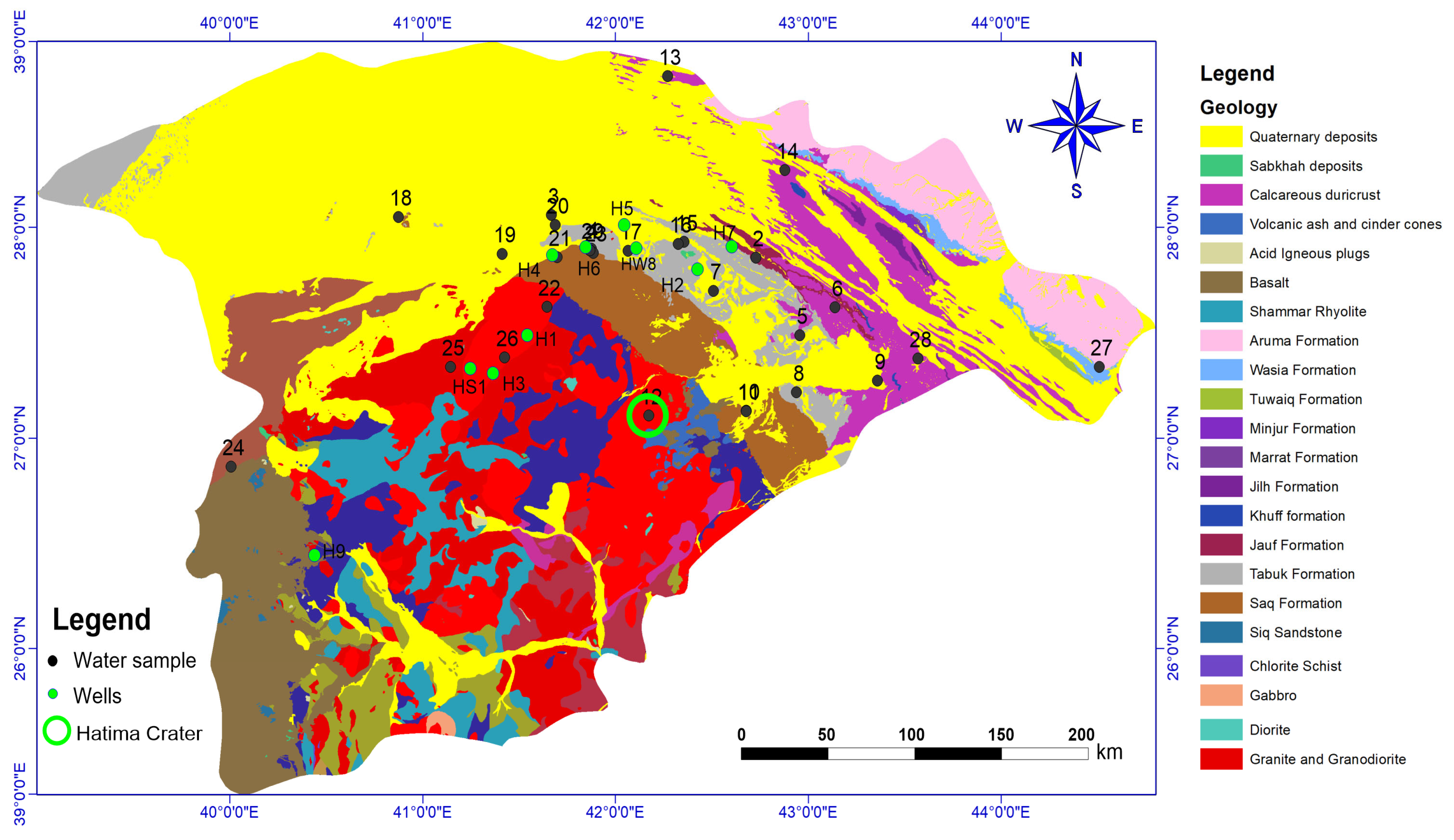
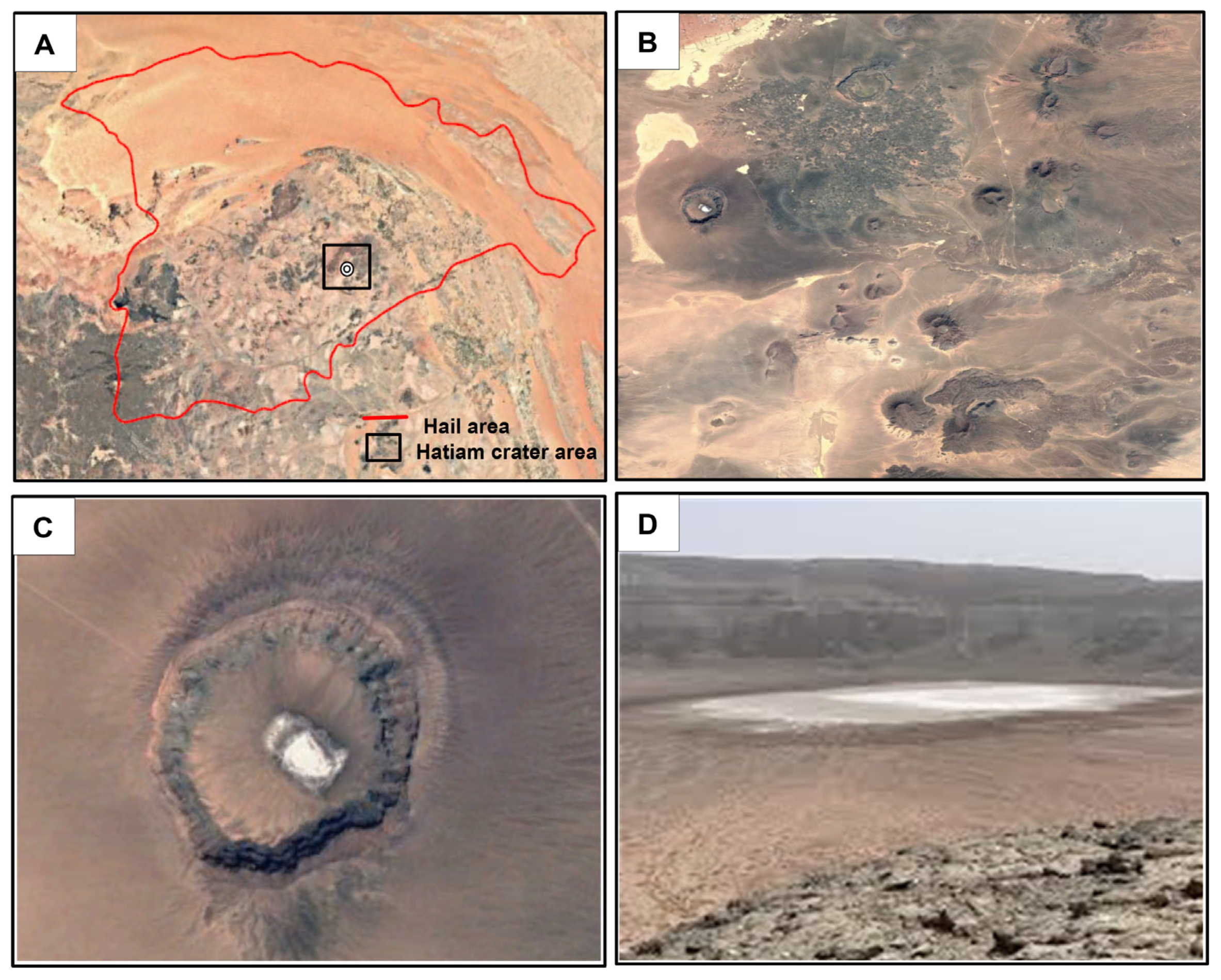
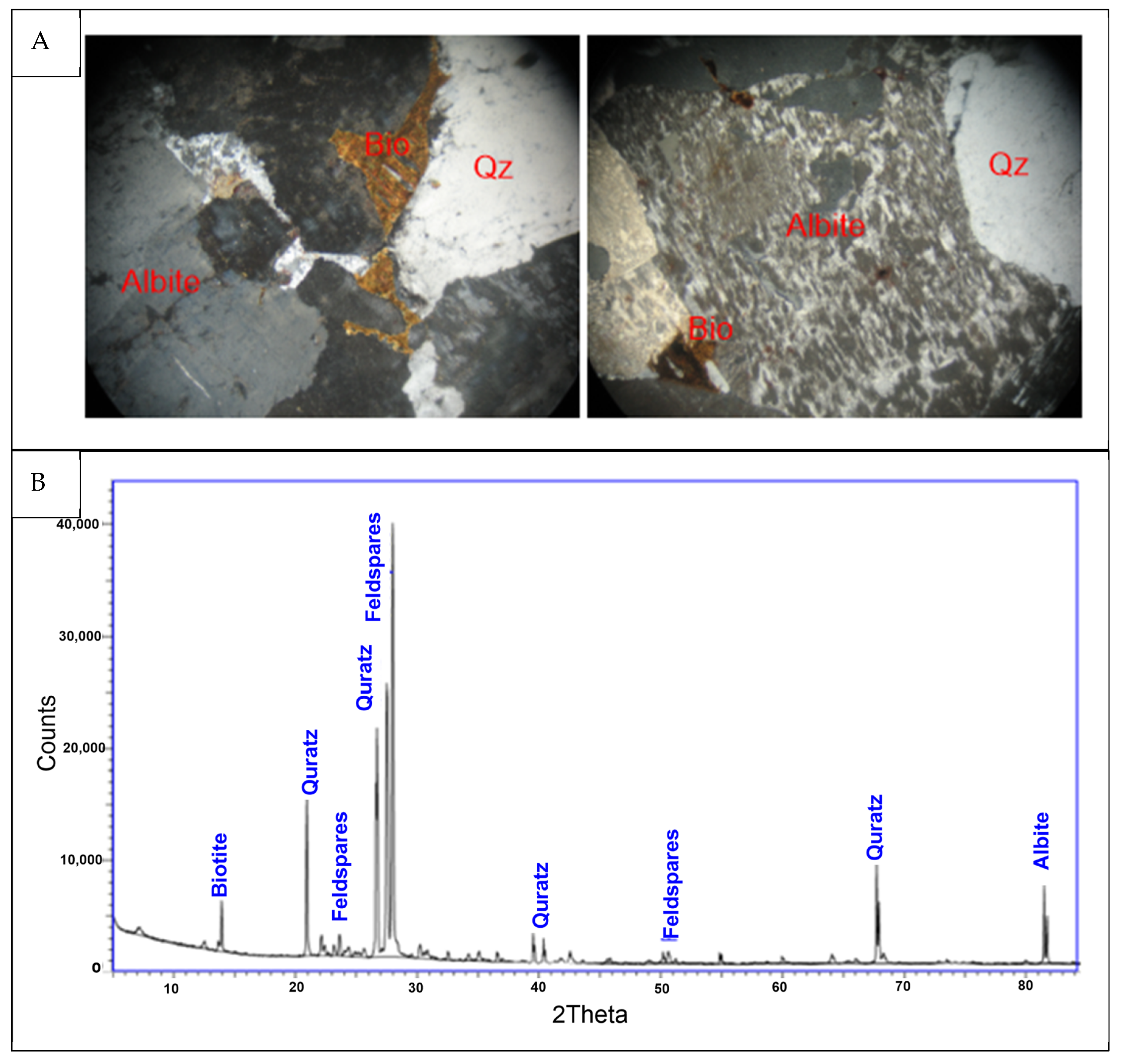
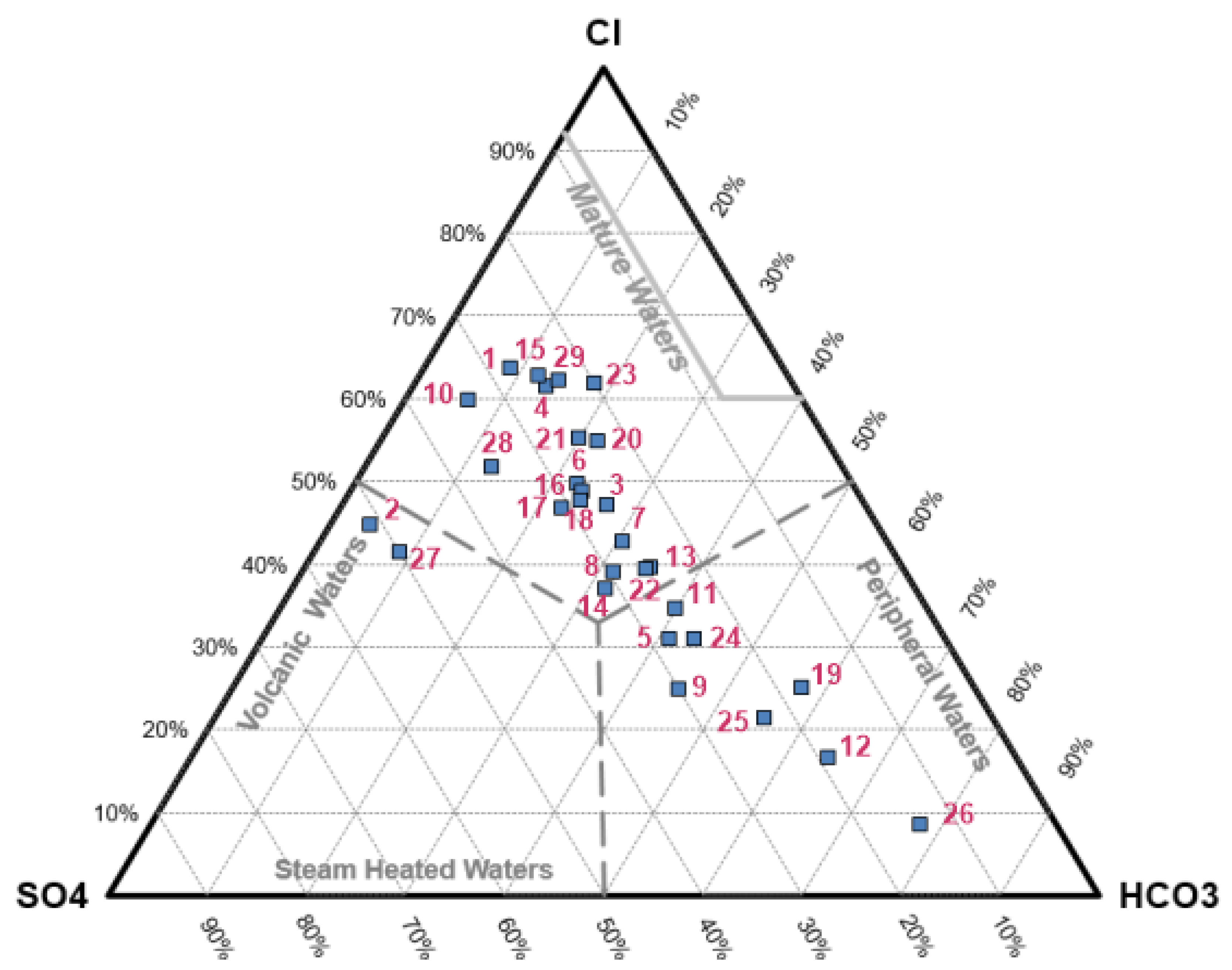
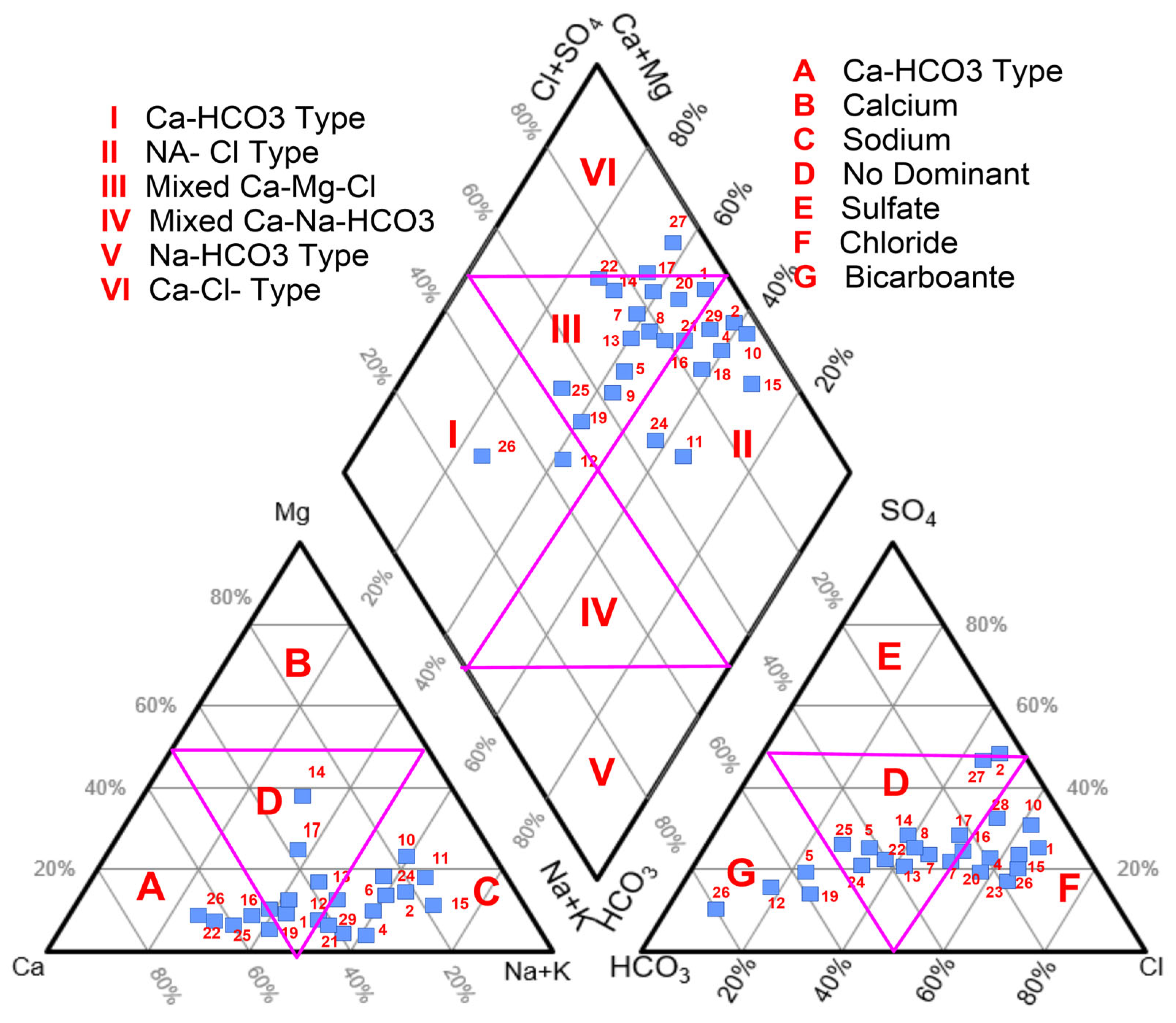
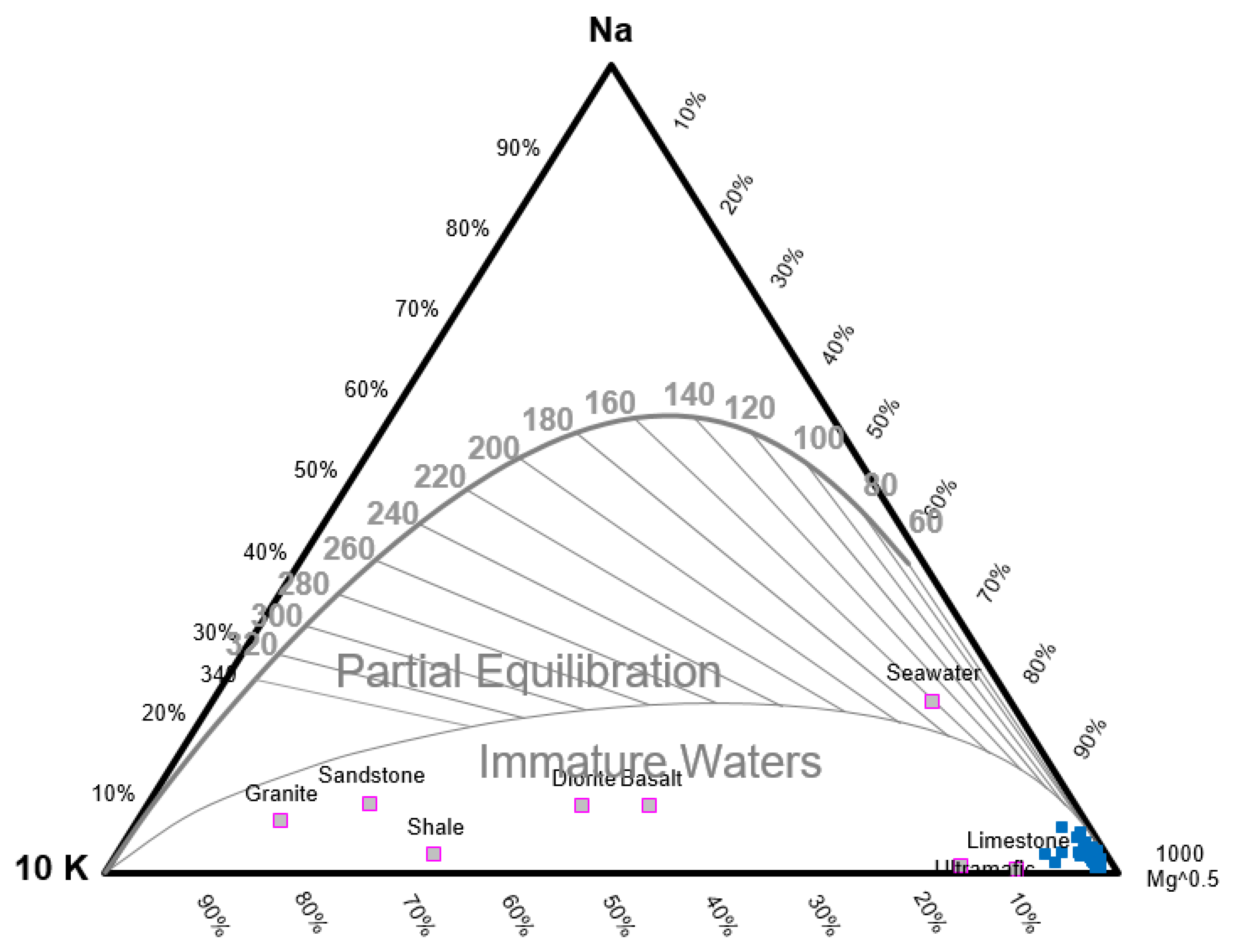
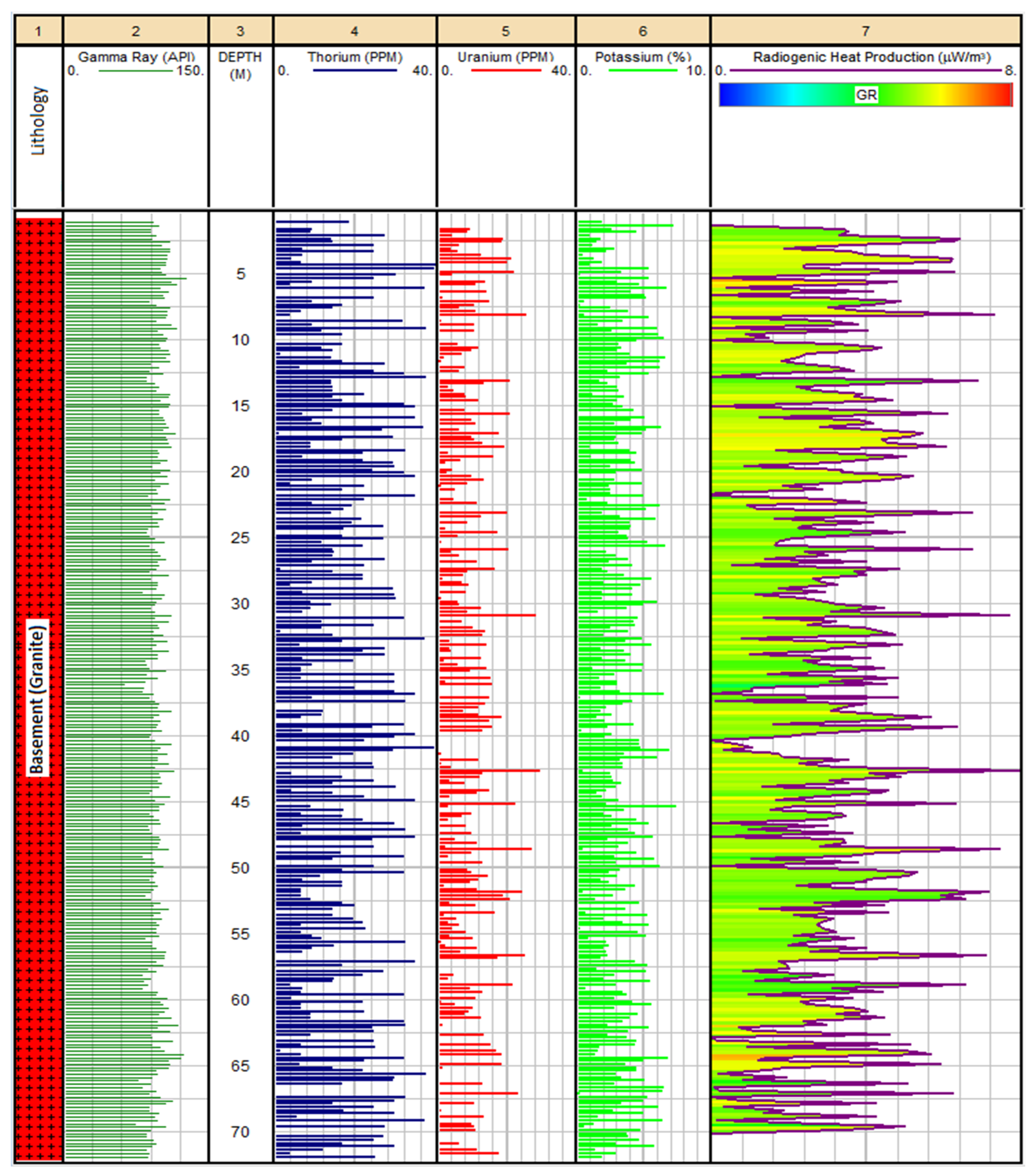
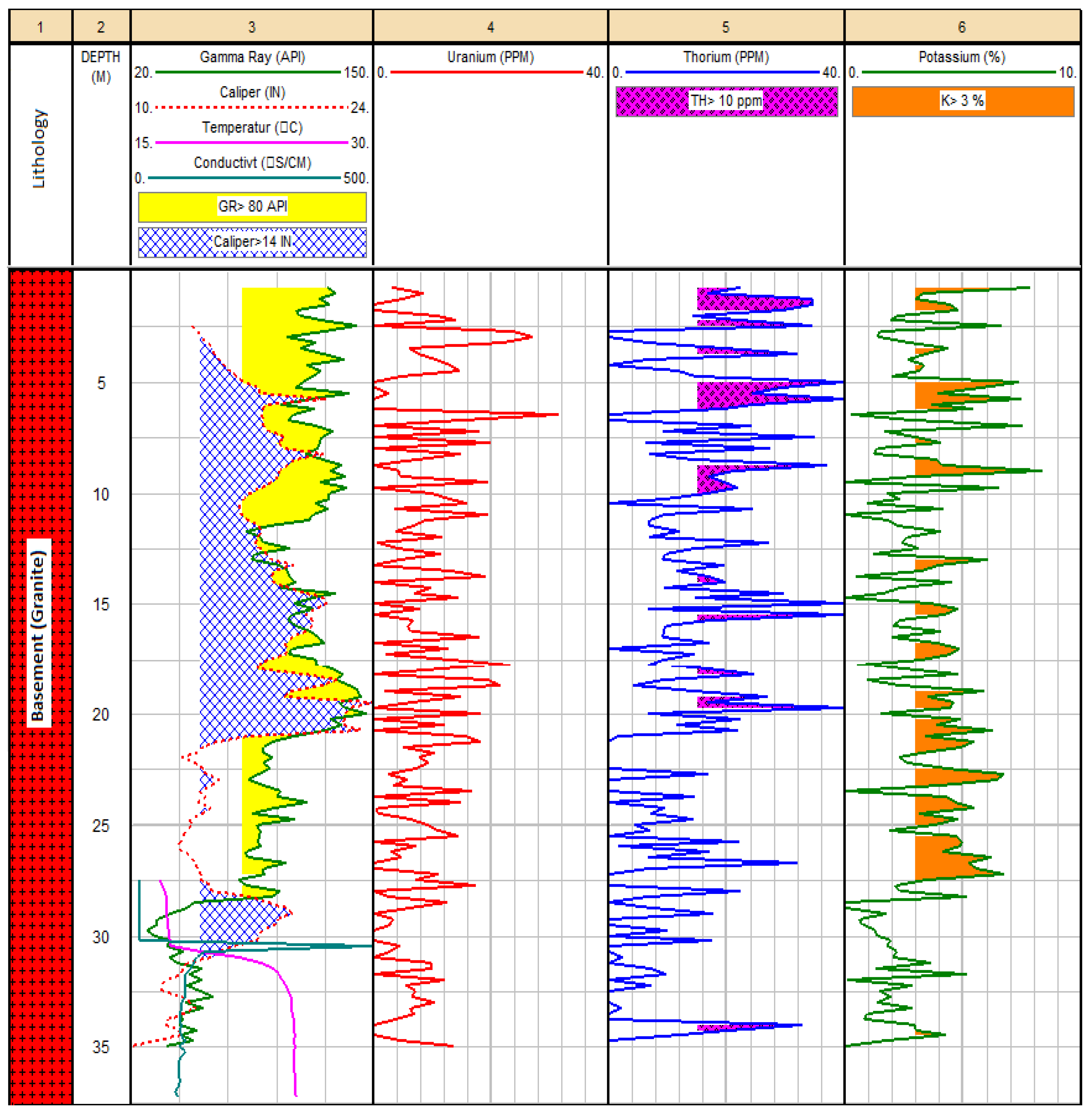
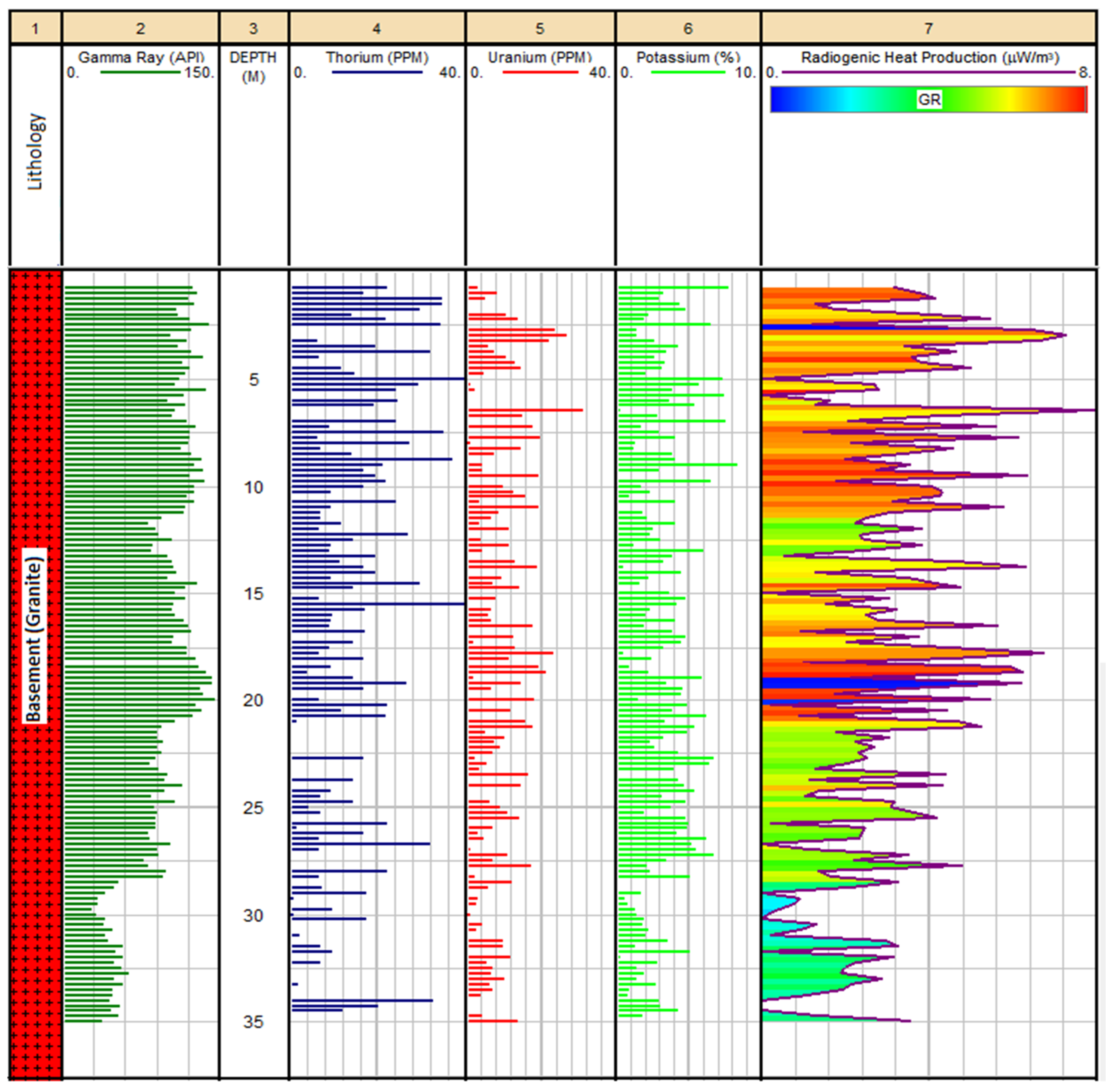
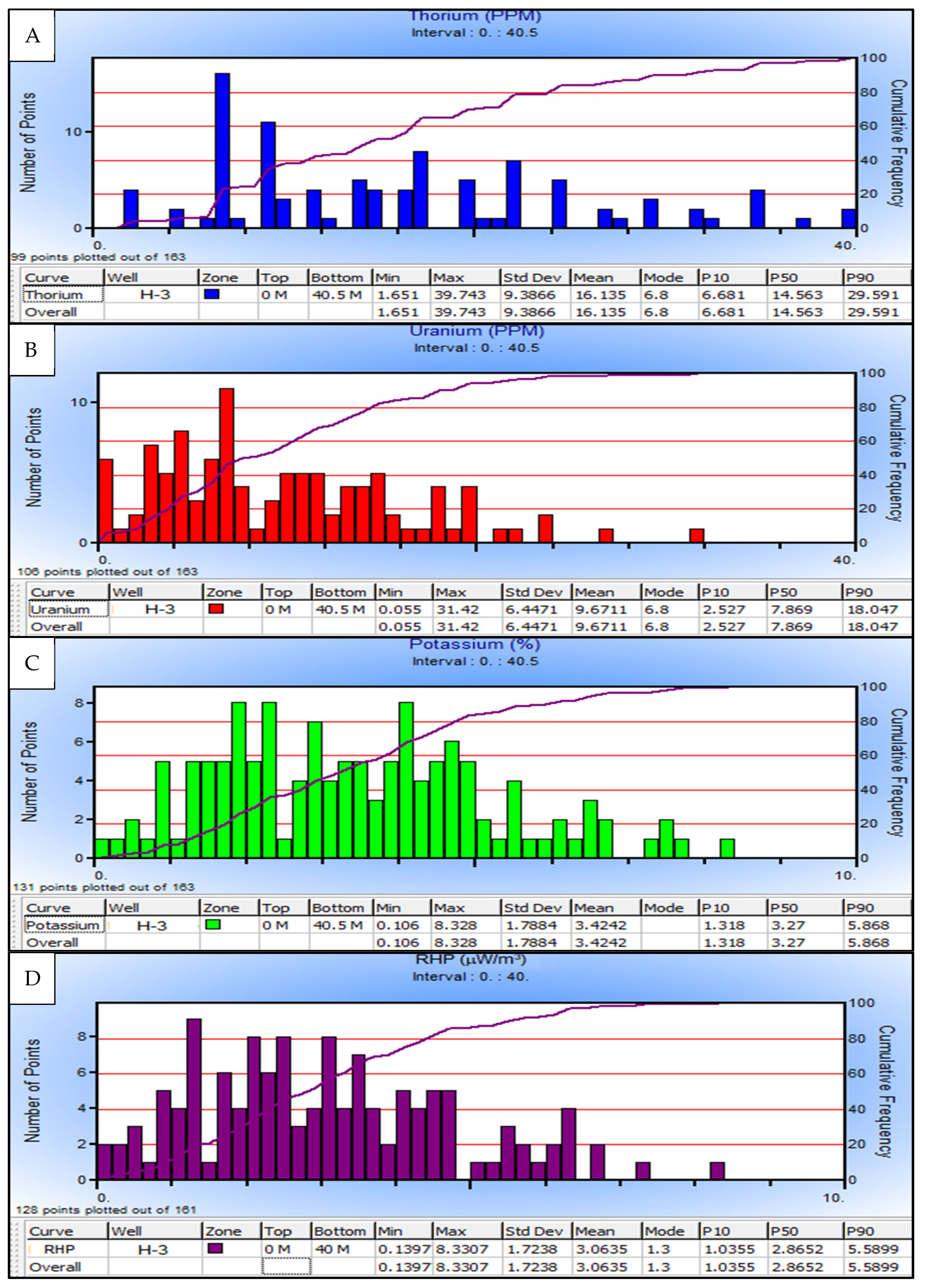
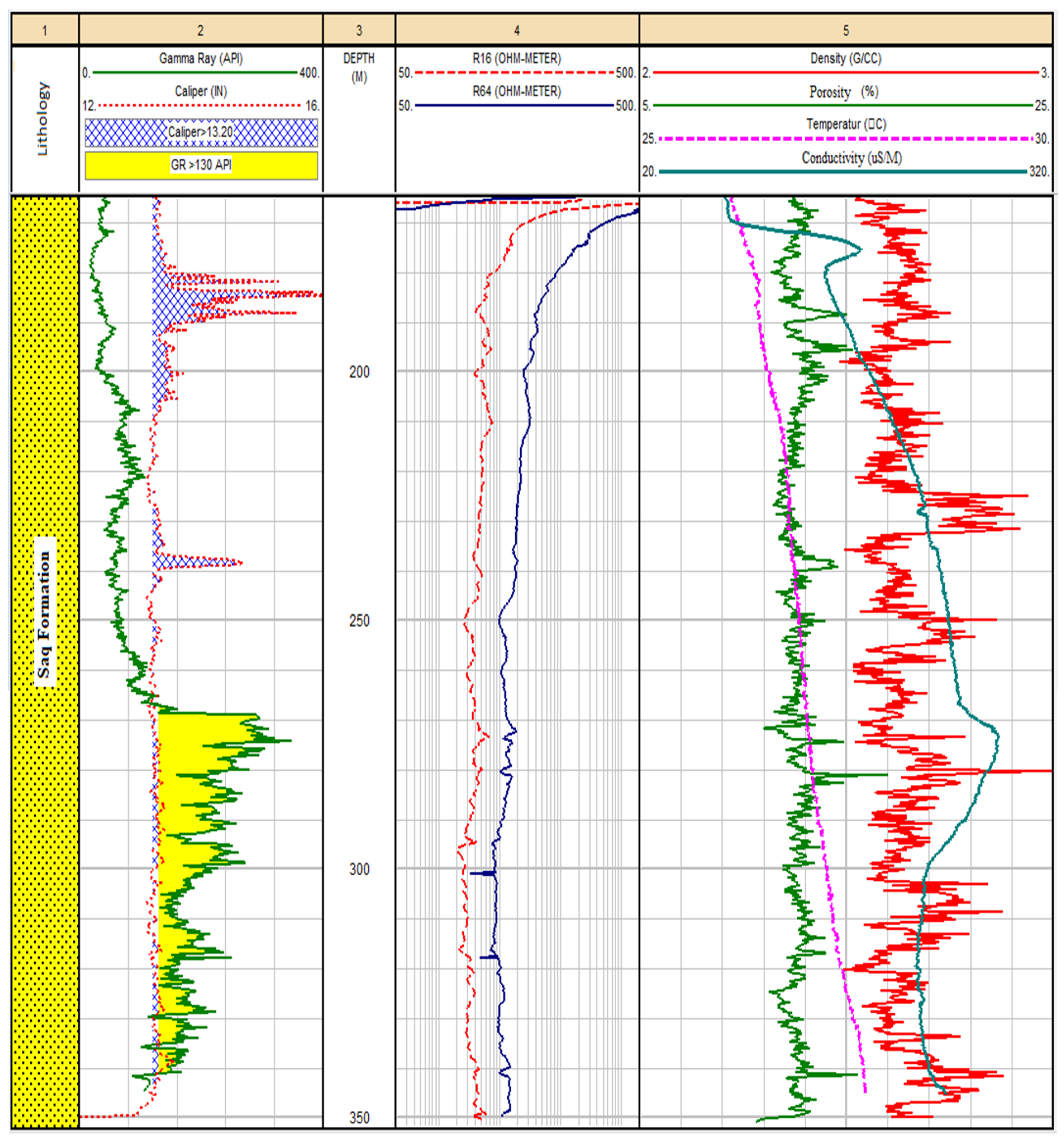
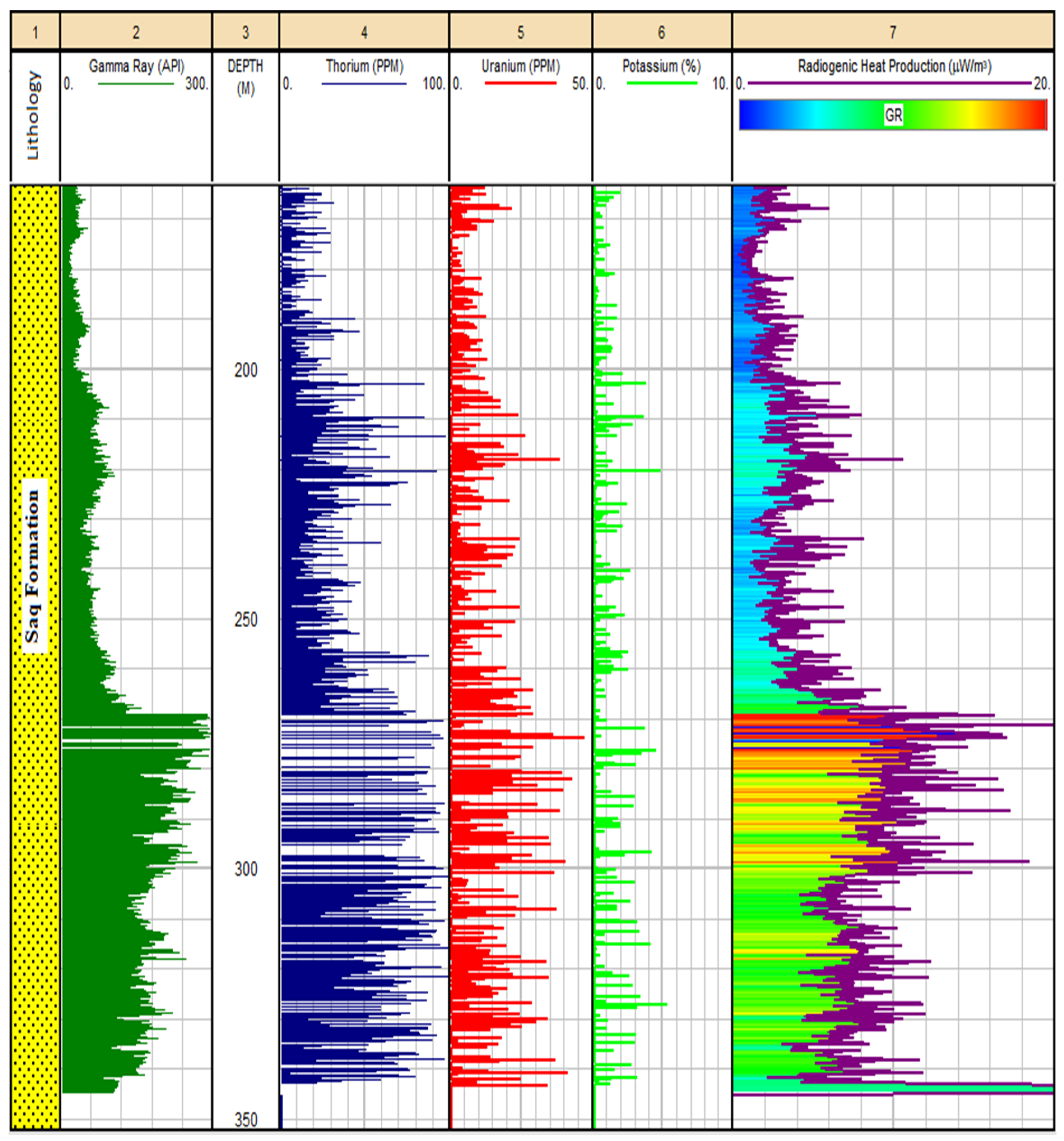
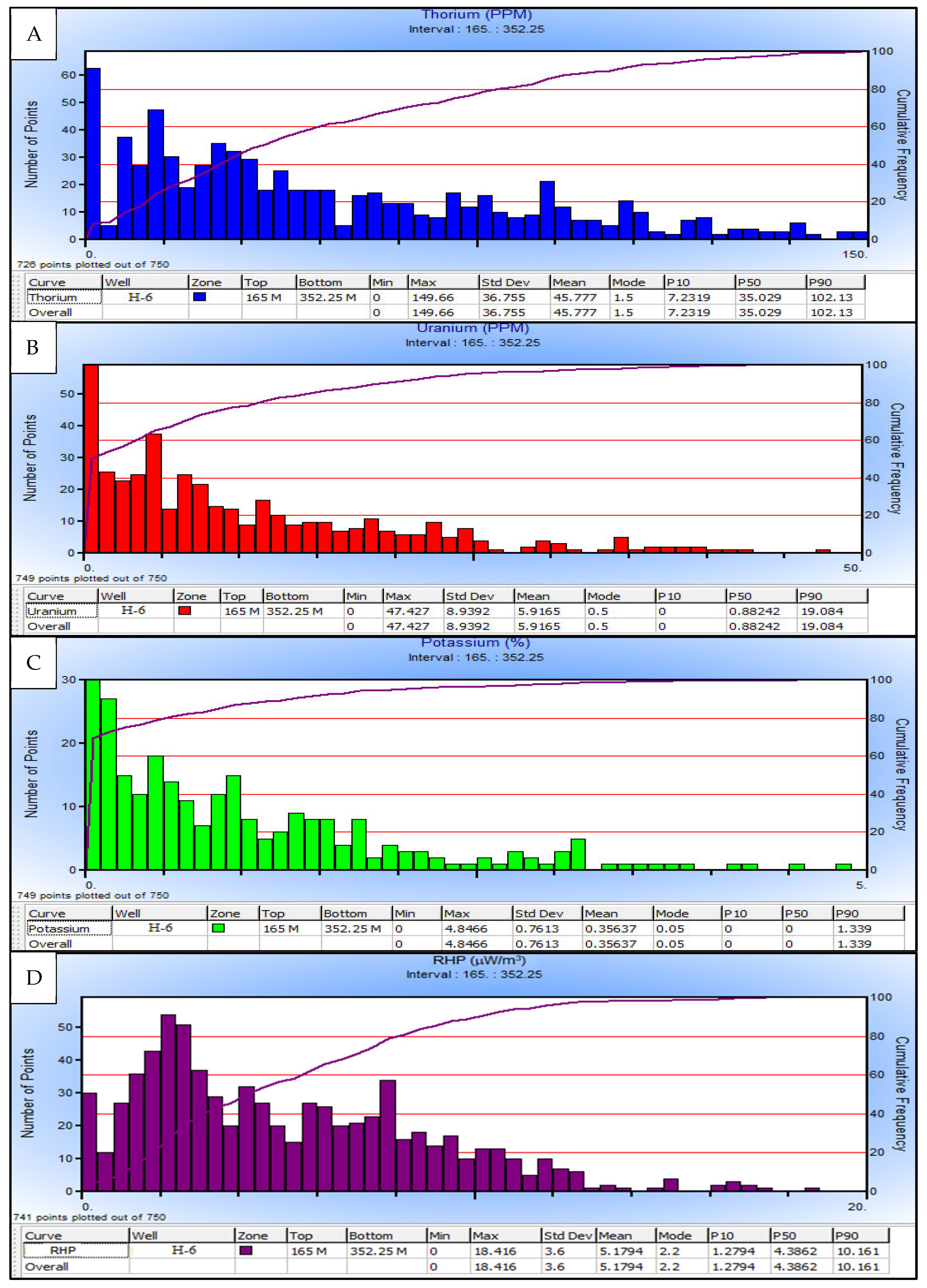
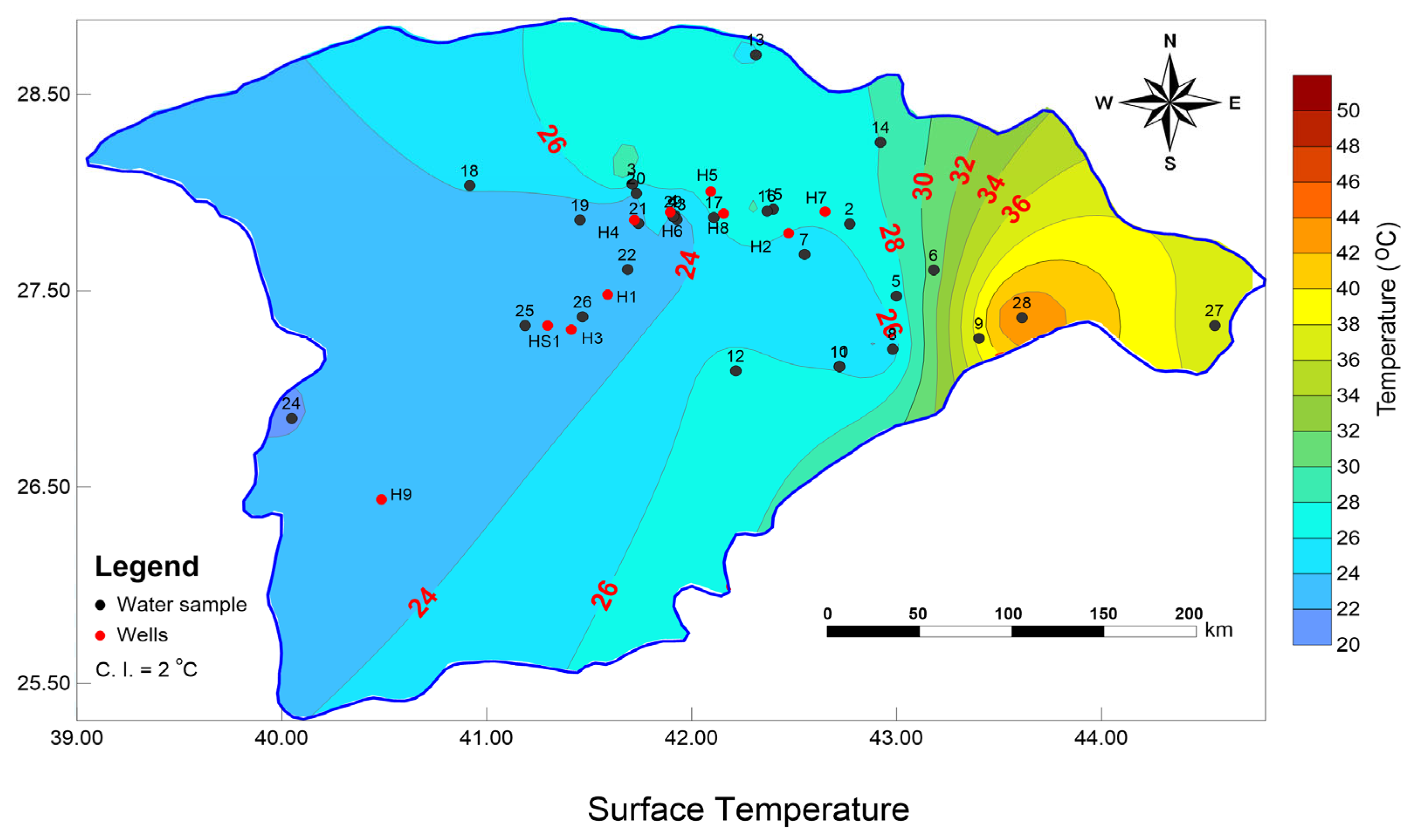
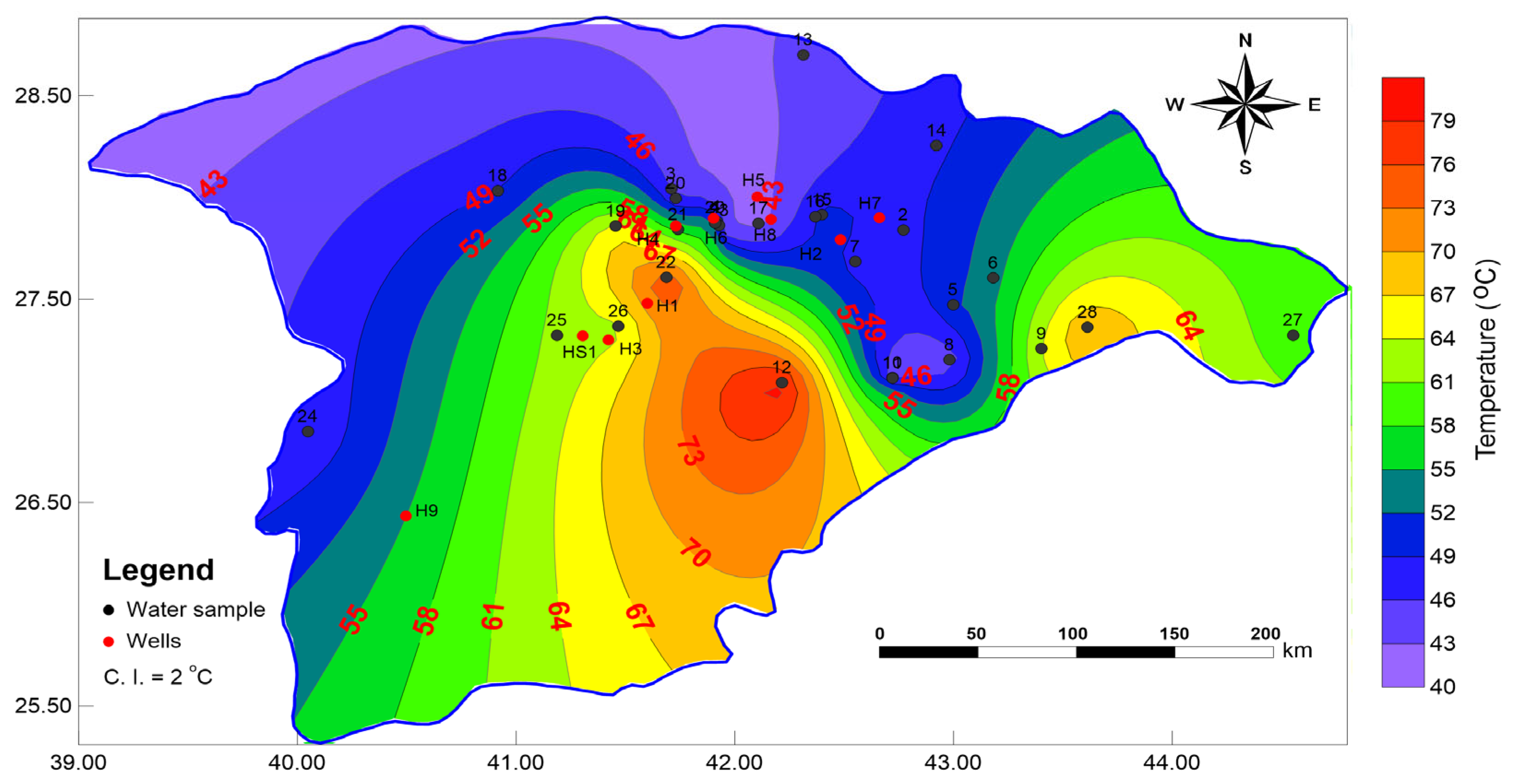
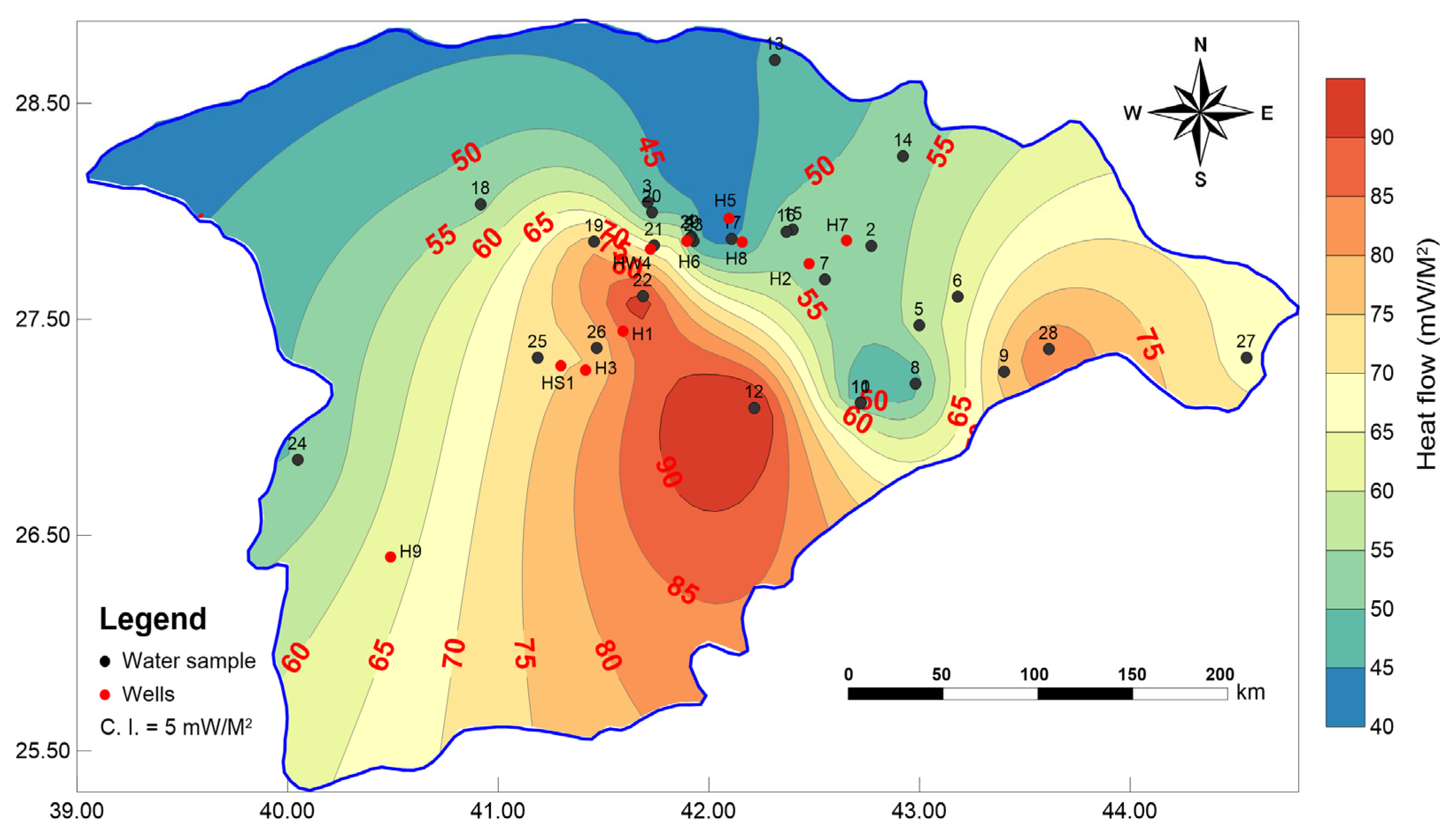
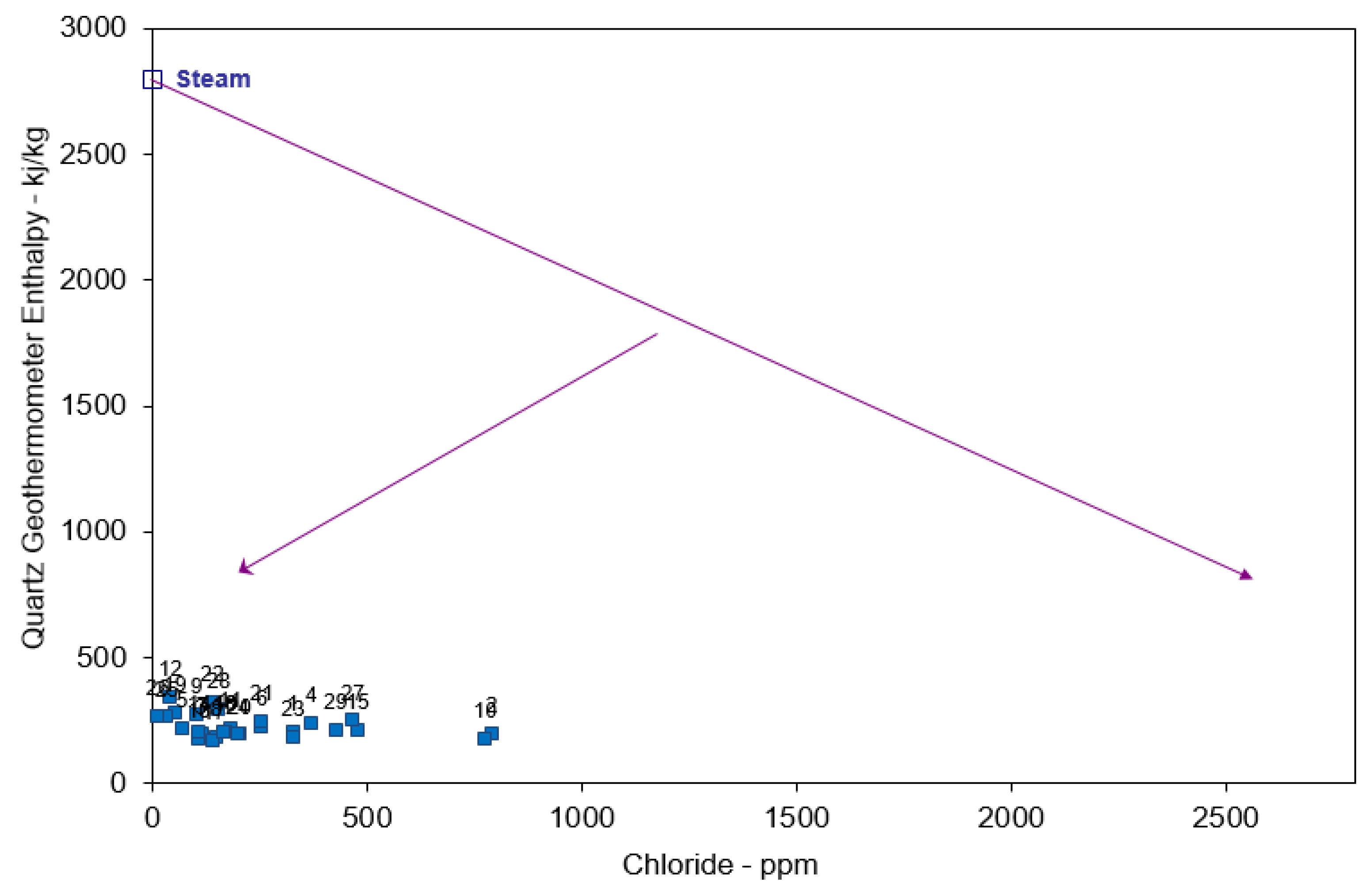
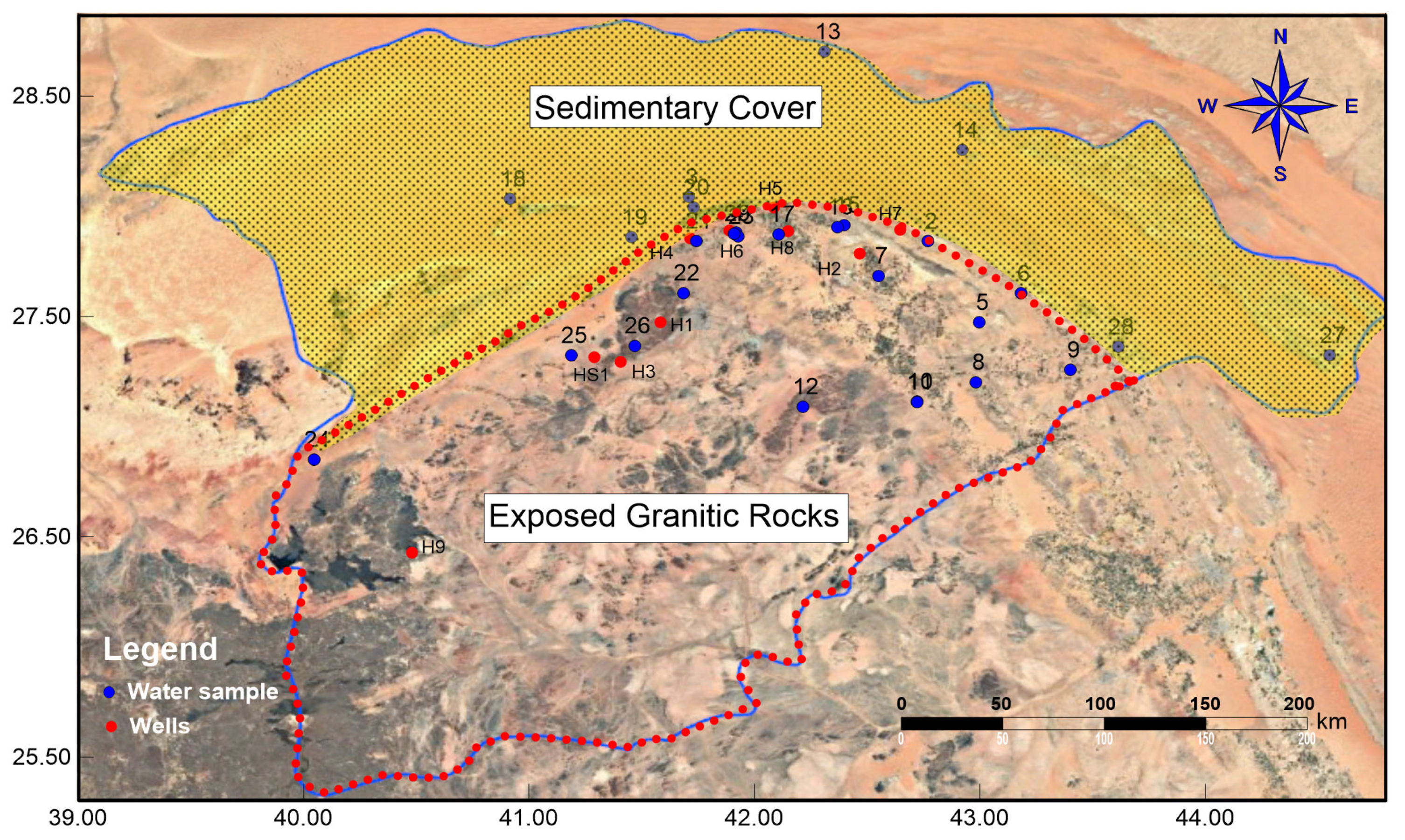
| Project | Type of Project | Capacity (Megawatts) | Date of Operation (Year) |
|---|---|---|---|
| Sudair | Solar | 1500 | 2023 |
| Dumat Al-Jandal | Wind energy | 400 | 2022 |
| Sakakah | Solar | 300 | 2020 |
| South Jeddah | Solar | 300 | 2023 |
| Rabigh-1 | Solar | 300 | 2023 |
| Total | 2800 | ||
| Trace Elements (ppm) | ||||||||||
| Ba | Rb | Sr | Y | Zr | Nb | Th | Pb | Ga | Zn | Cu |
| 47.00 | 226.10 | 10.00 | 110.30 | 282.40 | 111.74 | 203.79 | 54.40 | 29.96 | 1331.10 | 2265.60 |
| Ni | V | Cr | Hf | Cs | Sc | Ta | Co | Li | Be | U |
| 11.40 | 8.00 | 317.00 | 11.01 | 4.30 | 1.00 | 7.70 | 1.10 | 12.80 | 5.00 | 15.40 |
| Oxides (%) | ||||||||||
| SiO2 | TiO2 | Al2O3 | Fe2O3 | MnO | MgO | CaO | Na2O | K2O | P2O5 | Cr2O3 |
| 76.52 | 0.13 | 11.56 | 2.60 | 0.06 | 0.05 | 0.48 | 3.88 | 4.56 | <0.01 | 0.07 |
| Rare Earth Elements (REE, ppp) | ||||||||||
| Mo | La | Ce | Pr | Nd | Sm | Eu | Gd | Tb | Dy | Er |
| 89.83 | 95.30 | 188.99 | 21.60 | 76.60 | 17.20 | 0.30 | 18.20 | 3.20 | 20.90 | 12.60 |
| Sample No. | TDS | EC | pH | T | SiO2 | Ca2+ | Mg2+ | Na+ | K+ | Cl− | F− |
|---|---|---|---|---|---|---|---|---|---|---|---|
| ppm | mS/cm | °C | [mg/L] | [mg/L] | [mg/L] | [mg/L] | [mg/L] | [mg/L] | [mg/L] | ||
| 1 | 729 | 1461 | 7.93 | 25 | 13.2 | 112 | 19 | 141 | 8 | 328 | 0.9 |
| 2 | 2090 | 4040 | 8.00 | 26.4 | 13.1 | 191 | 96 | 606 | 29 | 792 | 1.3 |
| 3 | 332 | 681 | 7.82 | 28.8 | 12.1 | 51 | 9 | 62 | 5 | 114 | 0.8 |
| 4 | 789 | 1589 | 7.99 | 27.9 | 16.7 | 112 | 16 | 218 | 5 | 371 | 0.8 |
| 5 | 303 | 623 | 7.28 | 26.6 | 14.4 | 44 | 9 | 44 | 5 | 70 | 0.1 |
| 6 | 647 | 1302 | 7.5 | 29.6 | 15.4 | 55 | 22 | 129 | 21 | 256 | 0.4 |
| 7 | 368 | 747 | 7.2 | 24.6 | 13.0 | 61 | 10 | 49 | 4 | 117 | 0.7 |
| 8 | 501 | 1017 | 6.77 | 23.7 | 11.6 | 64 | 20 | 75 | 6 | 150 | 1.3 |
| 9 | 502 | 1014 | 6.87 | 37.3 | 20.3 | 62 | 20 | 63 | 26 | 104 | 0.2 |
| 10 | 1718 | 3340 | 6.41 | 25.5 | 11.4 | 103 | 93 | 384 | 13 | 776 | 1.1 |
| 11 | 625 | 1260 | 7.74 | 26.4 | 14.4 | 34 | 28 | 157 | 3 | 182 | 2.6 |
| 12 | 322 | 660 | 7.02 | 26.8 | 30.6 | 49 | 8 | 46 | 3 | 43 | 2.5 |
| 13 | 370 | 757 | 7.64 | 25.8 | 11.5 | 55 | 12 | 53 | 6 | 109 | 0.5 |
| 14 | 478 | 971 | 7.69 | 27.7 | 13.2 | 50 | 40 | 50 | 12 | 110 | 0.4 |
| 15 | 969 | 1924 | 7.6 | 27.6 | 14.0 | 58 | 27 | 246 | 10 | 479 | 0.8 |
| 16 | 437 | 890 | 7.64 | 28.5 | 13.4 | 50 | 13 | 74 | 6 | 171 | 0.8 |
| 17 | 399 | 814 | 7.47 | 25.8 | 11.0 | 65 | 10 | 53 | 5 | 144 | 1.0 |
| 18 | 477 | 969 | 7.62 | 24.1 | 13.5 | 46 | 12 | 93 | 8 | 169 | 0.2 |
| 19 | 284 | 585 | 7.54 | 22.4 | 21.6 | 47 | 5 | 39 | 2 | 53 | 1.8 |
| 20 | 470 | 955 | 7.54 | 22.3 | 12.6 | 82 | 11 | 58 | 5 | 204 | 0.9 |
| 21 | 621 | 1252 | 7.67 | 22.7 | 17.3 | 83 | 11 | 113 | 3 | 256 | 1.4 |
| 22 | 473 | 961 | 7.77 | 22.9 | 27.8 | 101 | 10 | 44 | 4 | 141 | 0.9 |
| 23 | 689 | 1385 | 7.74 | 22.1 | 11.6 | 103 | 14 | 108 | 5 | 329 | 1.1 |
| 24 | 685 | 1377 | 6.83 | 21.9 | 12.6 | 56 | 31 | 145 | 15 | 199 | 0.4 |
| 25 | 230 | 476 | 7.83 | 22.6 | 19.4 | 44 | 4 | 25 | 2 | 35 | 2.1 |
| 26 | 196.8 | 408 | 7.87 | 22.6 | 19.9 | 45 | 5 | 17 | 3 | 14 | 2.2 |
| 27 | 1319 | 2590 | 7.37 | 37.0 | 17.8 | 205 | 90 | 205 | 27 | 468 | 0.8 |
| 28 | 466 | 947 | 7.03 | 44.2 | 23.6 | 46 | 15 | 100 | 25 | 156 | 0.3 |
| 29 | 810 | 1620 | 8.51 | 28.5 | 13.9 | 137 | 18 | 213 | 6 | 428 | 1.0 |
| Sample No. | Quartz Geothermometer | Na-K Geothermometer | Heat Flow | Heat Flow | |
|---|---|---|---|---|---|
| Temp. [44] | Temp. [45] | Temp. | HF-Qz [44] | HF—Na-K | |
| 1 | 48.52 | 47.86 | 143.53 | 52.62 | 194.19 |
| 2 | 48.26 | 47.58 | 130.21 | 52.23 | 174.34 |
| 3 | 45.56 | 44.65 | 174.03 | 48.21 | 239.63 |
| 4 | 56.80 | 56.70 | 81.27 | 64.96 | 101.42 |
| 5 | 51.53 | 51.11 | 208.40 | 57.11 | 290.85 |
| 6 | 53.90 | 53.63 | 250.60 | 60.64 | 353.73 |
| 7 | 47.99 | 47.30 | 175.16 | 51.84 | 241.32 |
| 8 | 44.14 | 43.09 | 173.28 | 46.10 | 238.52 |
| 9 | 64.00 | 64.23 | 404.23 | 75.70 | 582.63 |
| 10 | 43.56 | 42.46 | 105.60 | 45.24 | 137.67 |
| 11 | 51.53 | 51.11 | 70.90 | 57.11 | 85.98 |
| 12 | 80.23 | 80.74 | 155.10 | 99.87 | 211.43 |
| 13 | 43.85 | 42.78 | 207.99 | 45.67 | 290.24 |
| 14 | 48.52 | 47.86 | 305.35 | 52.62 | 435.31 |
| 15 | 50.55 | 50.06 | 118.22 | 55.65 | 156.48 |
| 16 | 49.03 | 48.42 | 174.53 | 53.39 | 240.38 |
| 17 | 42.38 | 41.15 | 189.12 | 43.47 | 262.12 |
| 18 | 49.29 | 48.70 | 180.12 | 53.77 | 248.71 |
| 19 | 66.36 | 66.66 | 135.52 | 79.21 | 182.25 |
| 20 | 46.93 | 46.14 | 180.32 | 50.25 | 249.01 |
| 21 | 58.08 | 58.05 | 90.03 | 66.87 | 114.48 |
| 22 | 76.29 | 76.78 | 185.46 | 94.01 | 256.67 |
| 23 | 44.14 | 43.09 | 127.72 | 46.10 | 170.63 |
| 24 | 46.93 | 46.14 | 198.47 | 50.25 | 276.06 |
| 25 | 62.30 | 62.46 | 173.28 | 73.16 | 238.52 |
| 26 | 63.25 | 63.45 | 261.11 | 74.58 | 369.39 |
| 27 | 59.12 | 59.14 | 224.88 | 68.42 | 315.40 |
| 28 | 69.78 | 70.16 | 311.78 | 84.31 | 444.89 |
| 29 | 50.30 | 49.79 | 93.71 | 55.28 | 119.95 |
| Area | Sample Number | Dose Ratio | U ppm | Th ppm | K % | RHP μW/m3 |
|---|---|---|---|---|---|---|
| Hail Granite | HS1 | 497 | 17.80 | 90.20 | 5.20 | 11.93 |
| Midyan Granite | 65 | 251 | 9.70 | 31.10 | 5.40 | 5.44 |
| Midyan Granite | 64 | 209 | 7.00 | 25.00 | 5.10 | 4.23 |
| Quwaiyah Granite | 2 | 85 | 6.04 | 8.10 | 1.25 | 2.35 |
| Quwaiyah Granite | 1 | 82 | 4.53 | 9.67 | 1.25 | 2.06 |
| Jabal Abha [53] | 184018 | -- | 9.12 | 29.80 | 3.40 | 4.70 |
| Diorite [54] | 165546 | -- | 13.80 | 40.60 | 40.6 | 7.60 |
| J. Abu Sadi [55] | 155619 | -- | 5.72 | 10.50 | 4.11 | 2.60 |
| Parameter | Value |
|---|---|
| Estimated area of granite (km2) | 52,072 |
| Estimated temperature at 5 km depth (°C) | 200 |
| Cut-off temperature (°C) @ 3500 m | 145 |
| Average depth to granite and Thickness of the sedimentary cover (km) | 2.50 |
| Thickness (km) of granite above 5 km and Cut-off temperature of 145 °C | 1.50 |
| Estimated average temperature of resource (°C) | 172.5 |
| PJ (km3) | 60.5 |
| Estimated volume of resource in granite and above 5 km (km3) and Cut-off Temperature | 70,108 |
| Geothermal Resource in PJ (Cut-off temperature of 145 °C) | 4.73 × 10 6 |
| Geothermal Resource in kWh | 1.3137 × 10 18 |
| Geothermal Resource in Joule | 4.72932 × 10 24 |
| Geothermal Resource in MWe (Efficiency, 0.90) | 1.67 × 10 8 |
| Geothermal Resource in kWh (Heat recovery 2%) | 2.63 × 10 16 |
Disclaimer/Publisher’s Note: The statements, opinions and data contained in all publications are solely those of the individual author(s) and contributor(s) and not of MDPI and/or the editor(s). MDPI and/or the editor(s) disclaim responsibility for any injury to people or property resulting from any ideas, methods, instructions or products referred to in the content. |
© 2025 by the authors. Licensee MDPI, Basel, Switzerland. This article is an open access article distributed under the terms and conditions of the Creative Commons Attribution (CC BY) license (https://creativecommons.org/licenses/by/4.0/).
Share and Cite
Lashin, A.; Makhlouf, O.; Zaidi, F.K.; Noman, A.A. Investigating the Geothermal Potentiality of Hail Granites, Northern KSA: The Preliminary Results. Sustainability 2025, 17, 4656. https://doi.org/10.3390/su17104656
Lashin A, Makhlouf O, Zaidi FK, Noman AA. Investigating the Geothermal Potentiality of Hail Granites, Northern KSA: The Preliminary Results. Sustainability. 2025; 17(10):4656. https://doi.org/10.3390/su17104656
Chicago/Turabian StyleLashin, Aref, Oussama Makhlouf, Faisal K. Zaidi, and Abdulmalek Amin Noman. 2025. "Investigating the Geothermal Potentiality of Hail Granites, Northern KSA: The Preliminary Results" Sustainability 17, no. 10: 4656. https://doi.org/10.3390/su17104656
APA StyleLashin, A., Makhlouf, O., Zaidi, F. K., & Noman, A. A. (2025). Investigating the Geothermal Potentiality of Hail Granites, Northern KSA: The Preliminary Results. Sustainability, 17(10), 4656. https://doi.org/10.3390/su17104656






